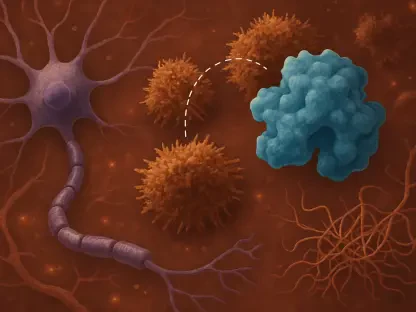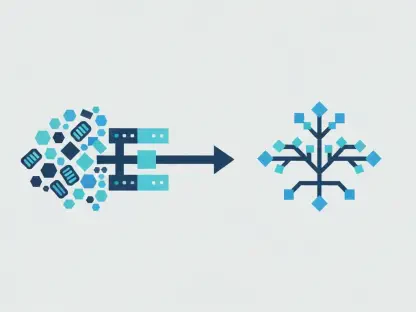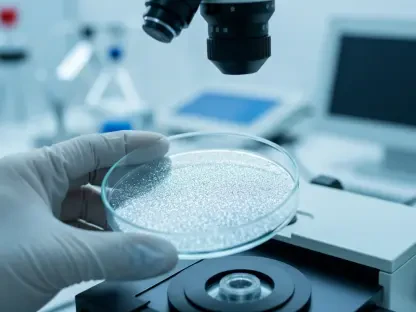In an era where the mysteries of human DNA are being unraveled at an unprecedented pace, the implications of genetic science are transforming both personal health and competitive sports in ways that were once unimaginable, opening doors to early interventions and ethical dilemmas. Consider the possibility of identifying a toddler’s risk of obesity long before any visible signs emerge, enabling timely actions that could alter their life’s trajectory. Simultaneously, picture the shadowy world of athletics where some exploit genetic modifications to gain an unfair edge, challenging the very essence of fair play. This exploration delves into two remarkable yet contrasting applications of genetic technology: the development of gene scores to predict obesity risk and the controversial practice of gene doping in sports. These areas, though seemingly disparate, are linked by a shared thread—the immense promise of genetic insights coupled with significant ethical dilemmas. As science pushes boundaries, society stands at a pivotal moment, grappling with how to harness these advancements for good while curbing potential misuse. This article aims to shed light on the mechanisms behind these innovations, their current capabilities, and the broader implications for health and fairness in competitive arenas. The journey through these topics reveals not only the power of genetics to shape individual outcomes but also the urgent need for robust frameworks to guide its application.
Harnessing Genetics for Health Predictions
The realm of public health is witnessing a revolutionary tool with the advent of the polygenic risk score (PRS) for obesity, a method that analyzes genetic data to forecast an individual’s likelihood of developing this condition. Crafted from extensive genome-wide association studies involving over five million participants, this score can pinpoint at-risk children as young as five years old. When paired with traditional metrics like body mass index (BMI), its predictive accuracy surges, offering a window for early interventions at a time when global obesity rates have doubled over recent decades. This breakthrough holds the potential to shift healthcare from reactive treatments to proactive prevention, addressing a crisis that affects millions worldwide. The significance lies in its ability to provide actionable insights, allowing families and medical professionals to tailor strategies that could mitigate risks before they manifest into lifelong challenges.
However, the utility of the PRS is not without limitations, and understanding its boundaries is crucial for its effective application. While it marks a significant leap in identifying genetic predispositions, experts stress that it does not equate to a predetermined fate. Environmental factors, such as diet and physical activity, interact heavily with genetic markers, meaning a high risk score serves as a warning rather than a verdict. Additionally, the tool’s performance varies across different populations, with lower accuracy noted for individuals of African ancestry due to underrepresentation in genetic datasets. Addressing these disparities is essential to ensure equitable benefits, highlighting the need for more inclusive research to refine this predictive instrument and make it a universally reliable resource in combating obesity.
Advancing Obesity Risk Tools and Challenges
As research into obesity prediction progresses, the focus is shifting toward refining the PRS to account for the condition’s diverse manifestations. Obesity is not a uniform health issue; it varies widely in onset timing and associated complications like type 2 diabetes. Scientists are now working on developing subtype-specific risk scores that could offer more personalized insights, enabling targeted interventions based on an individual’s unique genetic profile. The ultimate vision is to integrate these scores into standard health assessments, akin to routine checks for blood pressure or cholesterol levels. Such integration could transform how healthcare systems approach prevention, making genetic screening a cornerstone of early childhood medical evaluations and potentially reducing the burden of obesity-related diseases on a global scale.
Yet, significant hurdles remain in perfecting this genetic tool for widespread use. Current estimates suggest that roughly half of BMI variations are linked to genetics, but many contributing factors are still unidentified, limiting the PRS’s explanatory power. Moreover, ensuring accuracy across all ethnic and racial groups is a pressing concern, as existing biases in data could exacerbate health inequities if left unaddressed. The path forward requires expansive studies with diverse cohorts to uncover missing genetic links and enhance the tool’s applicability. Only through such efforts can the medical community hope to deliver a predictive model that serves all populations equally, paving the way for a future where obesity prevention is both precise and inclusive.
Uncovering the Risks of Genetic Manipulation in Athletics
Turning to the competitive world of sports, a darker application of genetic science emerges through the practice of gene doping, where DNA is altered to enhance athletic performance. This unethical technique, banned by the World Anti-Doping Agency since 2003, involves introducing foreign genetic material to boost attributes like muscle strength or endurance, often using genes such as insulin-like growth factor 1 (IGF-1). Initially explored in research settings during the 1990s, this method has evolved into a tangible threat, with documented instances in both human athletes and racehorse competitions. The allure of gaining a competitive edge drives some to disregard the rules, undermining the integrity of sports and posing serious questions about the direction of genetic technology in performance enhancement.
Detecting gene doping presents a formidable challenge, yet scientific advancements are making strides in this arena. Techniques like polymerase chain reaction (PCR) and next-generation sequencing (NGS) are employed to identify transgenes—altered genetic sequences—in athletes. Modern approaches favor less invasive blood tests over traditional muscle biopsies, analyzing DNA fragments released during physical exertion to spot illicit modifications. Despite these innovations, the battle against gene doping is far from won, as perpetrators continuously adapt their methods to evade detection. The limited scope of current testing panels further complicates efforts, underscoring the need for ongoing technological development to stay ahead of those who seek to exploit genetics for unfair advantage.
Ethical Quandaries and Detection Barriers in Sports
The ethical implications of gene doping cast a long shadow over its scientific intrigue, raising profound concerns about fairness and safety in competitive environments. Unlike health-focused genetic tools aimed at preventing obesity, this practice often prioritizes short-term gains over long-term well-being, with some athletes and even racehorse owners willing to risk severe health consequences for victory. The situation is particularly troubling in cases involving animals, which lack the ability to consent to such interventions, amplifying moral dilemmas. This disregard for ethical standards challenges the spirit of sportsmanship and necessitates a broader dialogue on how genetic technologies should be governed to protect all participants.
Compounding these ethical issues are the persistent difficulties in detection, which remain a significant barrier to curbing gene doping. While blood-based testing represents a leap forward in identifying genetic alterations, the methods are not foolproof, and dopers often employ sophisticated tactics to mask their actions. Skepticism abounds among experts regarding whether technological advancements alone can deter determined individuals, as the drive for success sometimes overshadows the fear of consequences. Expanding detection capabilities and developing comprehensive target panels are critical steps, but they must be paired with stringent regulations and educational initiatives to foster a culture of integrity in sports, ensuring that genetic science serves to elevate rather than exploit human achievement.
Navigating the Dual Edges of Genetic Innovation
The parallel narratives of genetic prediction in obesity and gene doping in sports reveal a complex landscape where science holds both transformative potential and inherent risks. Tools like the PRS offer hope in tackling a global health epidemic by identifying at-risk individuals early, enabling preventive measures that could reshape public health outcomes. Conversely, the misuse of similar technologies in athletics threatens to erode the principles of fair competition, highlighting a stark contrast in application. Both domains grapple with common challenges, including the need for diverse representation in genetic research and the intricate interplay between inherited traits and external influences, which complicates the interpretation of genetic data.
Reflecting on these dual applications, it becomes evident that the future of genetic science hinges on responsible stewardship. The journey forward must prioritize ethical guidelines to ensure that advancements benefit society without compromising values like equity and consent. For obesity prediction, this means accelerating efforts to refine tools through inclusive studies, while in sports, it involves strengthening detection mechanisms and fostering a commitment to fairness. As these fields evolve, the balance between innovation and integrity will shape how genetic technologies are perceived and utilized, urging stakeholders to collaborate on frameworks that safeguard their potential for good while addressing the pitfalls of misuse.









